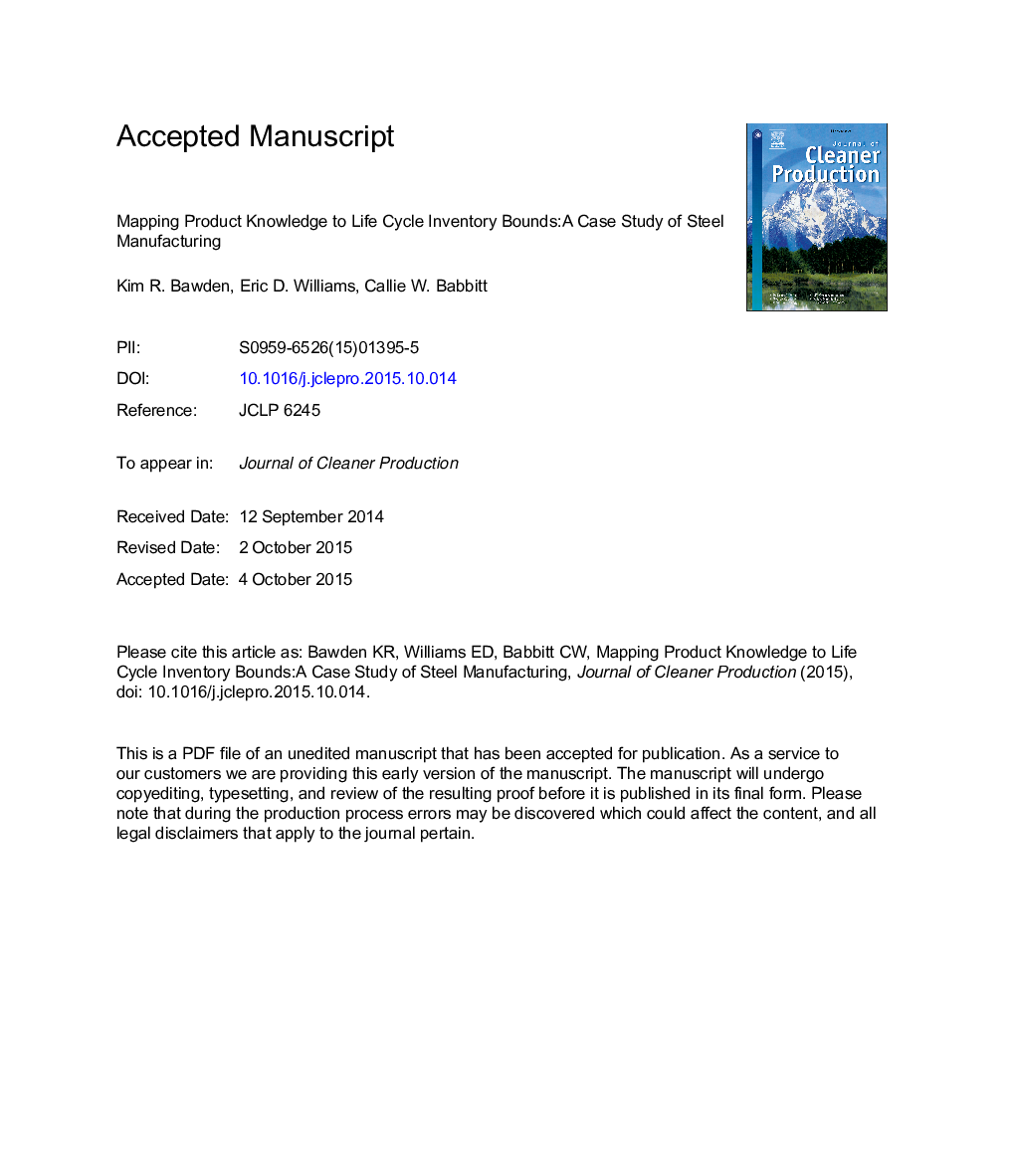| کد مقاله | کد نشریه | سال انتشار | مقاله انگلیسی | نسخه تمام متن |
|---|---|---|---|---|
| 8102944 | 1522136 | 2016 | 27 صفحه PDF | دانلود رایگان |
عنوان انگلیسی مقاله ISI
Mapping product knowledge to life cycle inventory bounds: a case study of steel manufacturing
ترجمه فارسی عنوان
نقشه برداری دانش محصول به محدوده موجودی چرخه عمر: مطالعه موردی تولید فولاد
دانلود مقاله + سفارش ترجمه
دانلود مقاله ISI انگلیسی
رایگان برای ایرانیان
کلمات کلیدی
GWPCEDGHGEAFBOFLCILCA - ارزیابی چرخه حیاتLife Cycle Assessment - ارزیابی چرخه عمر یا چرخه حیاتcumulative energy demand - تقاضای انرژی تجمعیSteel manufacturing - تولید فولادUncertainty - عدم قطعیتLife Cycle Inventory - موجودی چرخه زندگیglobal warming potential - پتانسیل گرمایش جهانیelectric arc furnace - کوره قوس الکتریکیGreenhouse gases - گازهای گلخانه ای
موضوعات مرتبط
مهندسی و علوم پایه
مهندسی انرژی
انرژی های تجدید پذیر، توسعه پایدار و محیط زیست
چکیده انگلیسی
This study develops and demonstrates a bounding methodology to quantify uncertainty in life cycle inventory (LCI) results arising from lack of detailed information on constituent materials. The method starts with the observation that the LCI of a material can change significantly with different attributes such as country of origin and recycled content, information often not specified in available bill-of-materials data. This lack of detailed information can be mapped to numerical bounds for LCI results. We demonstrate this idea via a case study of the contribution of steel manufacturing to the cumulative energy demand (CED) and life cycle global warming potential (GWP) of residential buildings. If steel type, recycled content and country of origin are all unknown, life cycle CO2-equivalent emissions of steel can vary from .7 to 5.9Â kg CO2eq/kg. When used in compiling an LCI of a building, this wide range leads to overlapping results in a comparison of life cycle GWP impact between steel- and concrete-framed buildings. That is, without knowledge of the particulars of steel used, life cycle assessment (LCA) cannot distinguish between the two building types. In contrast, with knowledge that the steel is low or un-alloyed, produced in the U.S., and has greater than 60% recycled content, uncertainty bounds are reduced to .8-1.4Â kg CO2eq/kg steel. With this range, the net impact of concrete-framed buildings is unambiguously larger than steel-framed residences. While demonstrated here for steel manufacturing, this bounding approach is broadly applicable in LCA.
ناشر
Database: Elsevier - ScienceDirect (ساینس دایرکت)
Journal: Journal of Cleaner Production - Volume 113, 1 February 2016, Pages 557-564
Journal: Journal of Cleaner Production - Volume 113, 1 February 2016, Pages 557-564
نویسندگان
Kim R. Bawden, Eric D. Williams, Callie W. Babbitt,
